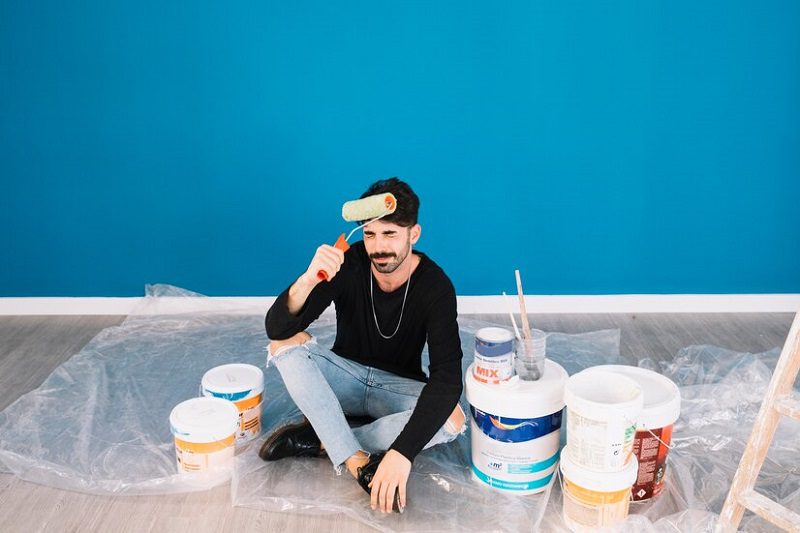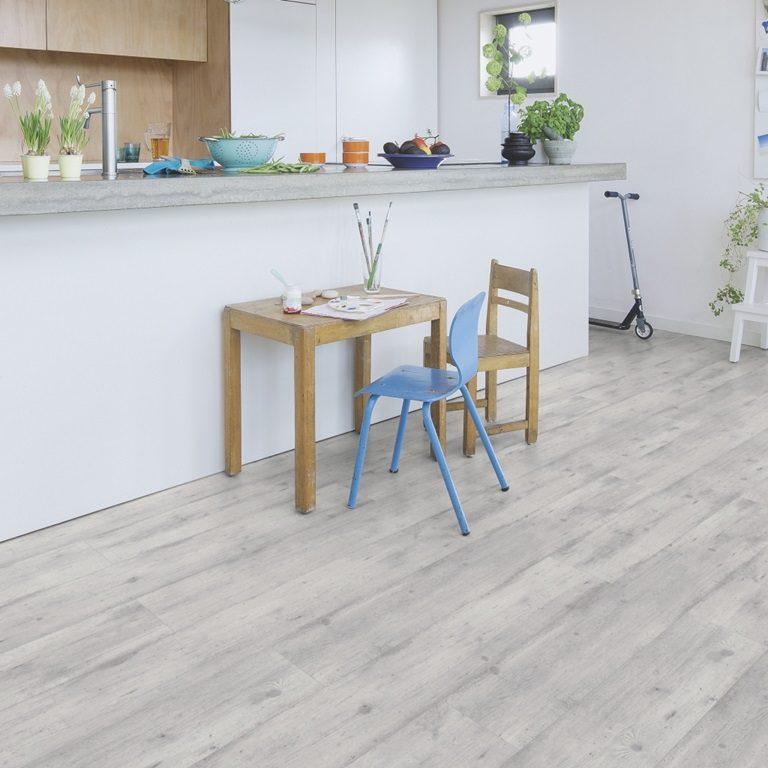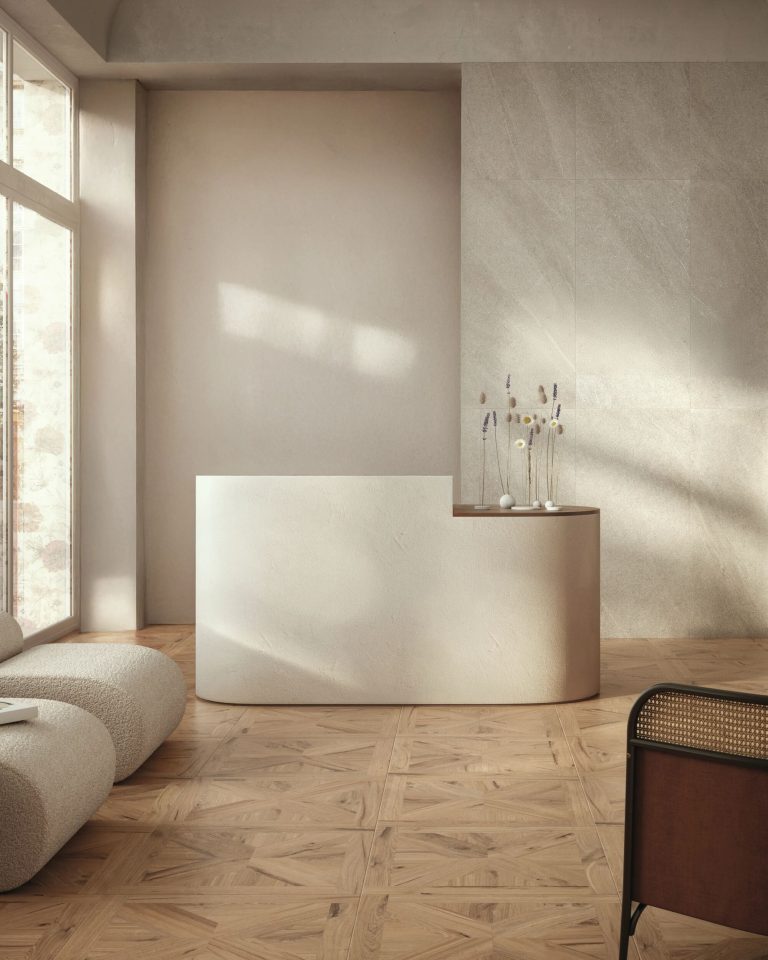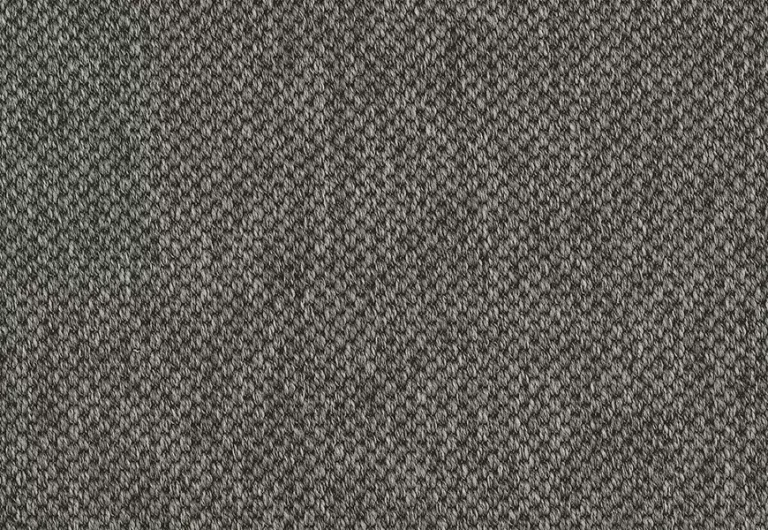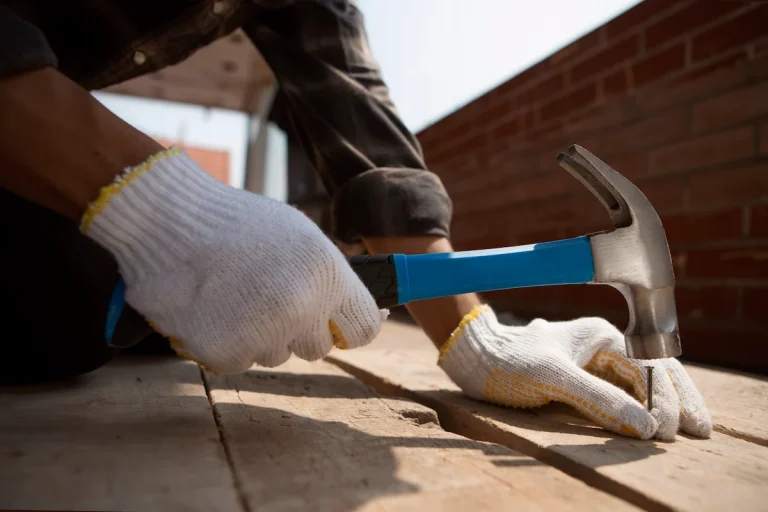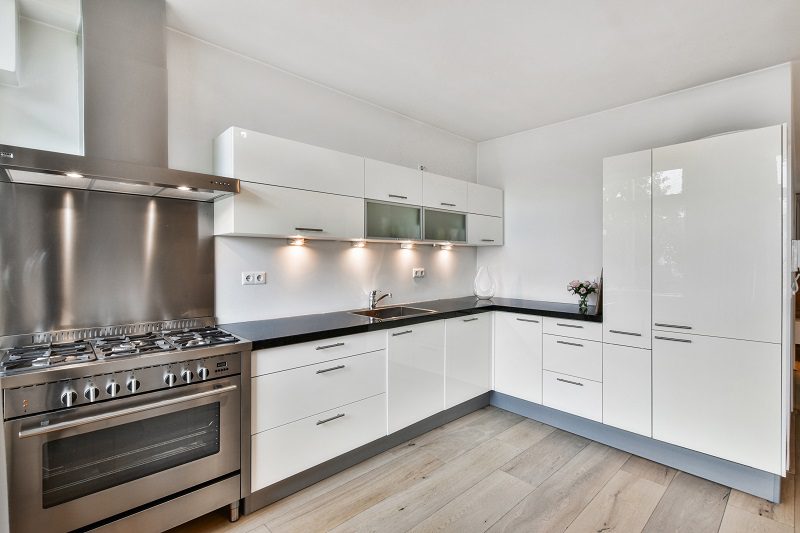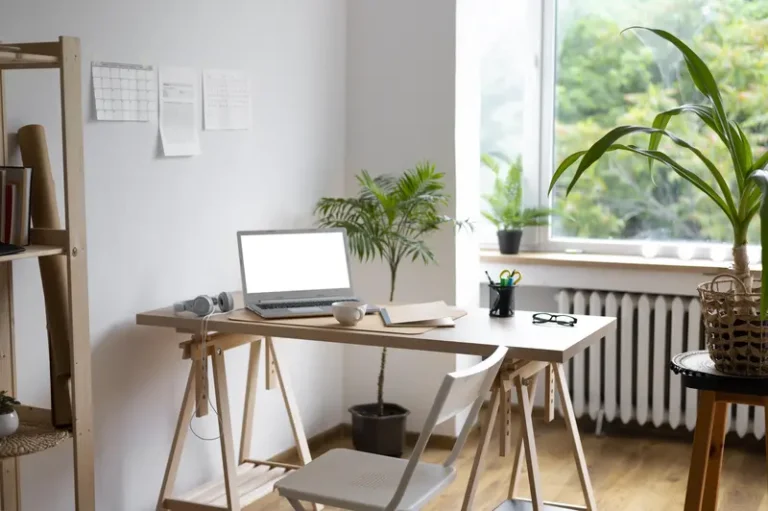Skirting boards are an essential part of a room’s decor, but painting them can be a tricky task, especially when there is carpet involved. That’s why, some people are wondering how to paint skirting boards with carpet.
Discover the tools and materials you need, the best type of paint for skirting boards, and how to prepare the room for painting.
We will guide you through the steps to paint skirting boards with carpet, along with some helpful tips and alternatives to consider.
What Are Skirting Boards?
Skirting boards, also known as skirting or mopboards, are architectural features that run along the lower portion of interior walls at the junction with the floor, providing a decorative finish to the room.
These boards serve both a functional and aesthetic purpose in a room. Functionally, they help protect the wall from furniture, vacuum cleaners, and other potential sources of damage. Skirting boards can hide uneven flooring/wall junctions and cover any gaps that may exist. From a design perspective, skirting boards come in various styles and materials, adding character and depth to the room.
Why Paint Skirting Boards with Carpet?
Painting skirting boards with carpet can enhance the overall aesthetic appeal of a room by creating a seamless and coordinated look between the walls, skirting boards, and carpet flooring.
When skirting boards are painted to match or complement the carpet, it not only visually expands the space, but also adds a sense of depth and unity to the room. The harmonious colour scheme ties all elements together, making the room feel more put together. Painting skirting boards in a similar colour to the carpet can make the ceilings appear higher, creating an illusion of extra height in the room. This technique is particularly effective in smaller spaces, as it can make them feel more open and spacious.
Tools and Materials Needed to Paint Skirting Boards with Carpet
To paint skirting boards with carpet, you will require a set of tools and materials including masking tape, gloss paint, dust sheets, paint brushes, and a paint shield to ensure a clean and efficient painting process.
It’s essential to have a good quality primer to ensure proper adhesion of the paint to the surface. Sandpaper in various grits is necessary for preparing the skirting boards by providing a smooth surface for painting. A caulking gun and a high-quality caulk are crucial for filling any gaps or cracks before painting.
Don’t forget to have a ladder or step stool for reaching higher areas, and a spirit level to ensure straight and level painting lines. Proper ventilation in the room is important for a smooth drying process and to facilitate better air circulation while painting.
Type of Paint That Best for Skirting Boards
When painting skirting boards, it is recommended to use gloss paint due to its durability and easy-to-clean nature, providing a long-lasting finish that withstands wear and tear.
Gloss paint enhances the aesthetic appeal of skirting boards by giving them a sleek and polished look, adding a touch of elegance to any room. The reflective properties of gloss paint can also make rooms appear brighter and more spacious, creating a sense of airiness. Gloss paint is available in a wide range of colour options, allowing for customisation to suit different interior design preferences.
Type of Brush or Roller Should be Used
For painting skirting boards, it is essential to use high-quality paint brushes that are suitable for trim work and intricate details to ensure a smooth and professional-looking finish.
In terms of selecting the right paint brushes for skirting boards, one must pay attention to the bristle type, size, and shape. Bristle types can vary from synthetic to natural, with each offering distinct benefits. Synthetic bristles are ideal for water-based paints, while natural bristles work well with oil-based paints.
The size of the brush also plays a crucial role. A smaller brush is perfect for detailed work, while a larger one is more suitable for covering larger surface areas efficiently.
Other Materials Needed
Along with paint and brushes, you should also have dust sheets to protect the floor, a paint shield to prevent splatters, and cleaning materials to remove any dust or debris from the skirting boards before painting.
Ensuring that the surface is clean and free of any dust or grime is crucial before beginning the painting process. Use a damp cloth or mild detergent to thoroughly clean the skirting boards, allowing the paint to adhere properly.
Investing in high-quality painter’s tape is essential to achieve clean lines and prevent any accidental smudges or paint seepage onto adjacent surfaces.
Proper preparation will not only result in a more professional finish but also extend the longevity of your paint job, saving you time and effort in the long run.
How to Prepare the Room for Painting
How do you paint skirting boards with carpet? Before painting skirting boards with carpet, it is crucial to prepare the room by clearing the area, protecting surfaces, and ensuring that the walls and skirting boards are clean and free from any dust or debris.
Start by removing any furniture or objects from the room to create a clean workspace. This will prevent any accidental spills on your belongings.
Next, clear the floor area around the skirting boards and cover the carpet with plastic dust sheets or old sheets to protect it from paint drips or spills.
With the room cleared, take a damp cloth or sponge and wipe down the walls and skirting boards to remove any dirt or grease. This step is essential to ensure proper adhesion of the paint and a smooth finish.
Open windows for ventilation and use a mask to protect yourself from fumes and dust while painting.
How to Protect the Carpet
To protect the carpet while painting skirting boards, use masking tape along the edges where the carpet meets the skirting boards to create a barrier against paint splatters or spills.
Ensure that the masking tape is securely pressed down along the edge, leaving no gaps for the paint to seep through. “Precision” is key in this process to achieve clean paint lines without any unwanted smudges on the carpet fibres.
When applying the tape, run your finger along the edge to ensure it adheres firmly. Make sure to work slowly and carefully to avoid accidentally tearing the tape or causing it to lift.
As you paint, be mindful to keep the brush or roller away from the edge of the tape to prevent any paint from bleeding underneath. “Care” is essential to maintain the integrity of the barrier throughout the painting process.
How to Clean the Skirting Boards
Before painting, thoroughly clean the skirting boards by removing any accumulated dust, dirt, or debris using a damp cloth or vacuum cleaner to ensure a smooth and even paint application.
Properly preparing the skirting boards is crucial to the overall success of your painting project. Along with removing surface debris, it is also essential to wash the boards with a mild detergent solution to eliminate any residual grease or grime that could affect the adhesion of the new paint.
Efficiently cleaned skirting boards provide a pristine foundation for the fresh coat of paint, ensuring a professional-looking finish that will enhance the overall aesthetic of the room.
How to Sand the Skirting Boards
To achieve a smooth and flawless finish, lightly sand the skirting boards to remove any imperfections, rough edges, or previous paint layers, ensuring a clean surface ready for painting.
Surface preparation is crucial before applying a fresh coat of paint to skirting boards. Proper sanding not only enhances the appearance of the boards but also improves paint adhesion, ensuring a long-lasting finish. Before starting, inspect the boards for any damage or irregularities that may need to be addressed. Use medium-grade sandpaper to smooth out any rough areas, followed by fine-grade sandpaper for a polished look. Consider using a sanding block or orbital sander for efficient sanding while maintaining control over the process.
How to Paint Skirting Boards with Carpet
Painting skirting boards with carpet involves a systematic process that includes taping off the carpet, priming the skirting boards, applying paint using high-quality brushes, and finally, touching up and cleaning up for a polished look.
Step 1: Tape off the Carpet
Guide on how to paint skirting boards with carpet begin by carefully applying masking tape along the edges where the carpet meets the skirting boards to protect the carpet fibres from paint spills and ensure clean, crisp edges.
When taping off the carpet, it’s crucial to press down the tape firmly to create a tight seal. This step helps prevent any paint seepage underneath the tape, maintaining a sharp boundary.
Accuracy is key – take your time to make sure the tape follows the contours of the carpet edge perfectly. Remember to overlap the tape slightly at corners for seamless transitions. Paying attention to these details ensures a professional finish and saves time on cleaning up stray paint later on.
Step 2: Prime the Skirting Boards
Priming the skirting boards with a suitable primer before painting helps the paint adhere better, improves coverage, and ensures a more uniform finish.
Choosing the right primer is the best way to paint skirting boards with carpet down:
- Oil-based primers are great for blocking stains and providing excellent adhesion.
- On the other hand, water-based primers have low odour, quick-drying, and work well for sealing bare wood.
Whichever type you choose, make sure it is compatible with the paint you plan to use. When applying the primer, ensure the surface is clean and dry, and consider sanding the skirting boards lightly to promote better adhesion. Using a quality brush or roller will help achieve a smooth, even coat.
Step 3: Paint the Skirting Boards
Using high-quality paint brushes, apply the chosen paint colour to the skirting boards in smooth, even strokes, working from top to bottom for a consistent finish.
Proper brush technique is crucial in achieving a professional appearance. Hold the brush at a slight angle and use long, steady strokes to prevent streaks and brush marks. Make sure to load the brush with an adequate amount of paint without overloading it, as this can cause drips or uneven coverage.
Paint application needs to be methodical and deliberate, ensuring that each section is coated evenly for a seamless appearance. Allow sufficient drying time between coats as per the manufacturer’s instructions to avoid smudges or imperfections.
Step 4: Touch Up and Clean Up
Inspect the painted skirting boards for any imperfections or missed spots, then touch up as needed. Clean up any paint spills or splatters immediately to maintain a tidy workspace.
After completing the touch-ups, carefully examine the entire surface to ensure a seamless finish. Use fine-grit sandpaper to smooth out any rough edges or drips. Wipe down the skirting boards with a damp cloth to remove any dust or debris. Once the paint has dried completely, consider adding a protective top coat for extra durability. This will help maintain the freshness of the paint and protect it from scuffs or stains. Remember to store any leftover paint properly for future touch-ups or repairs.
Some Tips for Painting Skirting Boards with Carpet
When painting skirting boards with carpet, ensure to work carefully and patiently, use good quality tools and materials, and practise proper painting techniques to achieve a flawless and durable finish that enhances the room’s overall appearance.
- One important tip is to protect the carpet by carefully taping it off with painter’s tape to prevent any accidental spills or splatters.
- It’s essential to clean and prepare the skirting boards properly before painting to ensure better adhesion and longevity of the paint.
- Remember to paint in thin, even coats and allow sufficient drying time between layers to prevent drips and ensure a smooth finish.
The Alternatives to Painting Skirting Boards with Carpet
If painting skirting boards with carpet is not suitable, alternatives include using a carpet shield to protect the carpet, removing the carpet temporarily during painting, or hiring a professional painter for a seamless finish.
1. Use a Carpet Shield
A carpet shield is a protective film that can be applied to the carpet to safeguard it from paint drips or spills whilst painting the skirting boards, offering an efficient and temporary solution.
It serves as a barrier between the carpet and any potential paint accidents, providing peace of mind during the painting process. The application of a carpet shield is simple and hassle-free; one just needs to unroll it over the carpet surface, ensuring it adheres well to prevent any seepage. This transparent film allows one to continue painting without worrying about unintended messes ruining the carpet beneath. Once the painting task is complete, the removal of the shield is easy and leaves no residue behind, leaving the carpet intact.
2. Remove the Carpet
For a more thorough painting job, removing the carpet before painting the skirting boards can provide better access and prevent any accidental damage or staining of the carpet fibres.
When preparing to remove the carpet, ensure to clear the area of any furniture or obstacles that could obstruct the process. It’s advisable to wear gloves and a dust mask to protect yourself from any dust or debris that may be trapped under the carpet.
Before painting the skirting boards, it’s essential to inspect the carpet for any imperfections or wear that may need attention. Once the carpet is safely removed, roll it up carefully to prevent tearing or damage.
While painting the skirting boards, cover the exposed floor to prevent any paint spills or drips. After painting is complete, allow sufficient time for the paint to dry before carefully reinstalling the carpet.
3. Hire a Professional Painter
If painting skirting boards with carpet seems challenging or time-consuming, hiring a professional painter can ensure a high-quality finish with minimal disruption, saving time and effort.
Professional painters bring years of experience and expertise to skirting board painting projects, ensuring that the job is done efficiently and effectively. Their knowledge of different paint types and techniques allows them to achieve a flawless finish, enhancing the overall aesthetic of the space.
Professional painters have access to high-quality tools and materials, ensuring durability and long-lasting results. By entrusting the job to skilled painters, you can rest assured that the workmanship will be of the highest standard, adding value to your property.
If you’re considering painting skirting boards with carpet, why not make use of TEKA Flooring’s fitting service? Our team of experts is here to assist you in finding the perfect flooring solution tailored to your needs.
Take it to TEKA and we will ensure a seamless hassle-free experience. Call us today to get a FREE quote on 01733 731 930.
Read also:


























